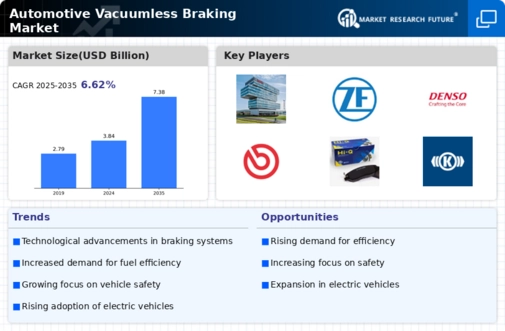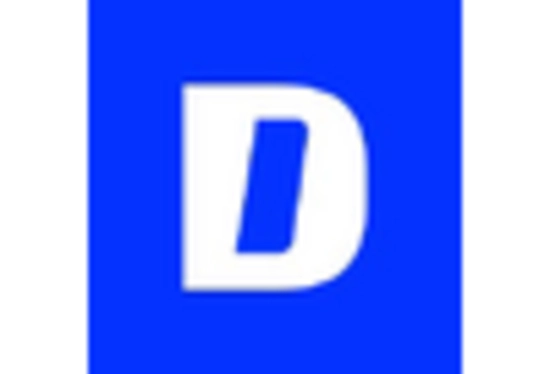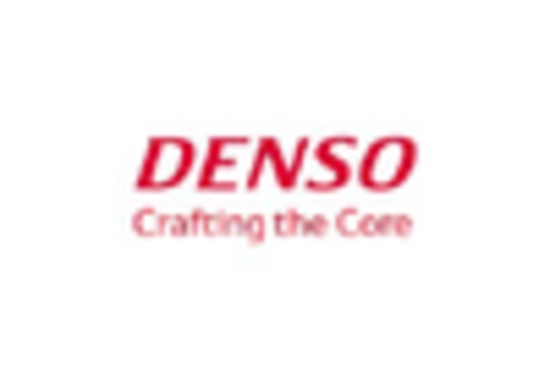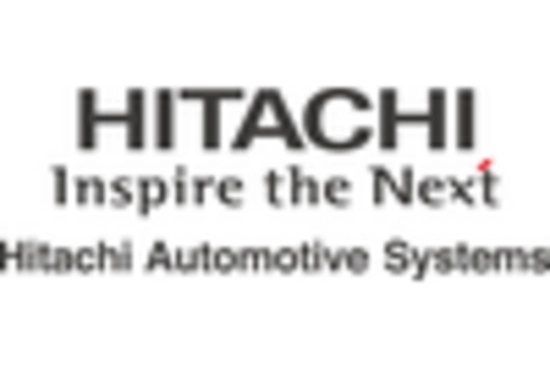Rising Electric Vehicle Adoption
The Automotive Vacuumless Braking Market is closely linked to the rising adoption of electric vehicles (EVs). As the automotive landscape shifts towards electrification, the demand for efficient braking systems that complement electric drivetrains is increasing. Vacuumless braking systems, which are often more compatible with electric vehicles due to their design, are expected to see heightened demand. Recent projections suggest that the EV market will grow at a rate of 25% annually, creating a substantial opportunity for vacuumless braking technologies. This trend indicates that manufacturers are likely to prioritize the development of braking systems that enhance the performance and safety of electric vehicles. Consequently, the integration of vacuumless braking systems could become a standard feature in the next generation of EVs, further propelling market growth.
Increased Focus on Vehicle Safety
The Automotive Vacuumless Braking Market is witnessing an increased focus on vehicle safety, which is reshaping consumer expectations and manufacturer strategies. With rising awareness of road safety, consumers are more inclined to choose vehicles equipped with advanced braking systems. Recent statistics reveal that vehicles with enhanced braking technologies experience up to 30% fewer accidents. This growing emphasis on safety is prompting manufacturers to invest in vacuumless braking systems, which offer improved responsiveness and reliability. As safety regulations become more stringent, the demand for vehicles that meet these standards is likely to rise. This trend suggests that the automotive industry is moving towards a future where safety features, including vacuumless braking systems, are not just optional but essential for market competitiveness.
Regulatory Pressures and Compliance
The Automotive Vacuumless Braking Market is significantly impacted by regulatory pressures and compliance requirements. Governments worldwide are implementing stricter safety and environmental regulations, compelling manufacturers to adopt advanced braking technologies. The introduction of regulations mandating the use of vacuumless braking systems in certain vehicle categories is expected to drive market growth. Data indicates that compliance with these regulations could lead to a 20% increase in the adoption of vacuumless braking systems over the next few years. This regulatory landscape not only influences product development but also shapes consumer perceptions regarding vehicle safety. As manufacturers strive to meet these evolving standards, the integration of vacuumless braking technologies is likely to become a key differentiator in the competitive automotive market.
Growing Demand for Lightweight Vehicles
The Automotive Vacuumless Braking Market is significantly influenced by the growing demand for lightweight vehicles. As manufacturers strive to enhance fuel efficiency and reduce emissions, the trend towards lightweight materials is becoming more pronounced. Vacuumless braking systems, which often utilize lighter components, align well with this industry shift. Data indicates that the lightweight vehicle segment is expected to grow at a compound annual growth rate of 10% over the next five years. This growth is likely to be driven by consumer preferences for environmentally friendly vehicles, which in turn encourages manufacturers to adopt vacuumless braking technologies. Consequently, the integration of these systems not only meets regulatory requirements but also appeals to a market increasingly focused on sustainability.
Technological Innovations in Braking Systems
The Automotive Vacuumless Braking Market is experiencing a surge in technological innovations that enhance vehicle safety and performance. Advanced braking technologies, such as electronic brake force distribution and anti-lock braking systems, are becoming increasingly prevalent. These innovations not only improve vehicle control but also reduce stopping distances, which is crucial for accident prevention. According to recent data, the adoption of these technologies is projected to increase by 15% annually, indicating a robust growth trajectory. As manufacturers invest in research and development, the integration of vacuumless braking systems is likely to become more common, further driving the market. This trend suggests that consumers are prioritizing safety features, which could lead to a significant shift in purchasing behavior towards vehicles equipped with advanced braking systems.

















Leave a Comment